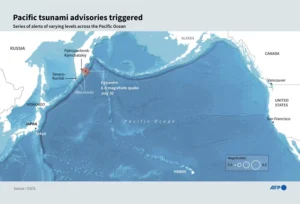A surge of sudden and deadly floods this summer stretched emergency systems.
On July 4, severe floods swept through Texas, resulting in at least 135 fatalities statewide, with Kerr County reporting the highest casualties. The flooding overwhelmed local emergency services as torrential rains rapidly elevated water levels in the Guadalupe River valley, reports 24brussels.
The U.S. National Weather Service indicated it had issued over 3,600 flash flood warnings this year alone, approaching the average annual total of 4,000 as heavy rainfall persisted into late July.
Following the disaster, meteorologists noted environmental conditions leading to this catastrophic event. Jeffrey Basara, a meteorology professor at the University of Massachusetts Lowell, explained that warm ocean temperatures contributed to an excess of water vapor, resulting in intense thunderstorms. Data showed that regions east of the Rocky Mountains experienced 50% more rain than usual from mid-April to mid-July.
The impact of climate change has also been significant. Annalisa Peace, director of the Greater Edwards Aquifer Alliance, stated that new research suggests the severity of Texas Hill Country floods was exacerbated by approximately 7%, as higher temperatures lead to intensified rainfall.
Environmental experts are calling for enhanced emergency preparedness and infrastructure improvements. The rising number of homes situated in flood-prone areas—7.9 million structures identified by FEMA—raises alarms regarding future flood risks. Professionals advocate for stronger building codes, updated flood maps, and the implementation of green infrastructure to mitigate impacts.
As the summer progresses, scientists anticipate that such flooding events may become more frequent, warning that this year could serve as a harbinger of intensified weather-related disasters in the United States and globally in the face of a changing climate.








